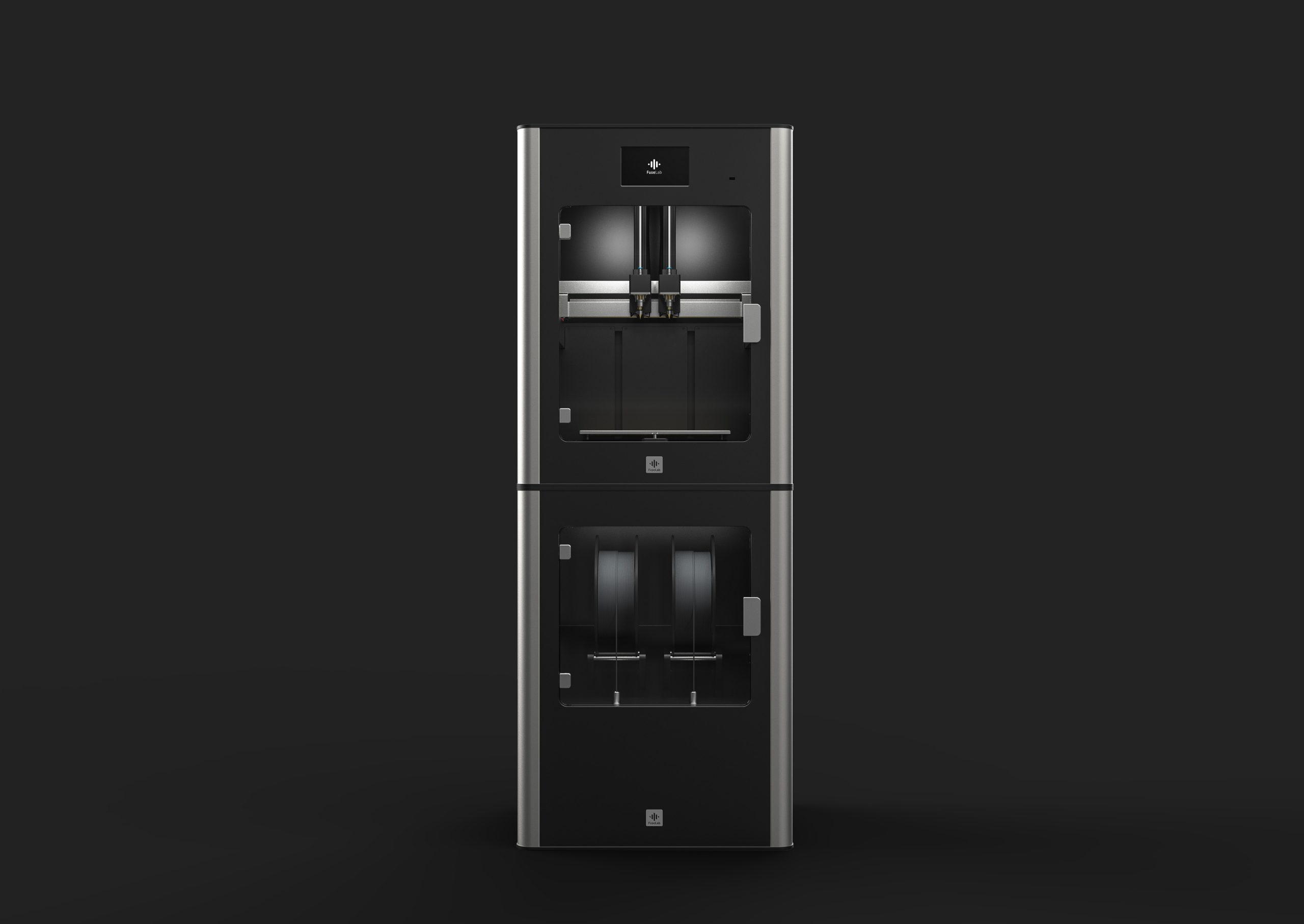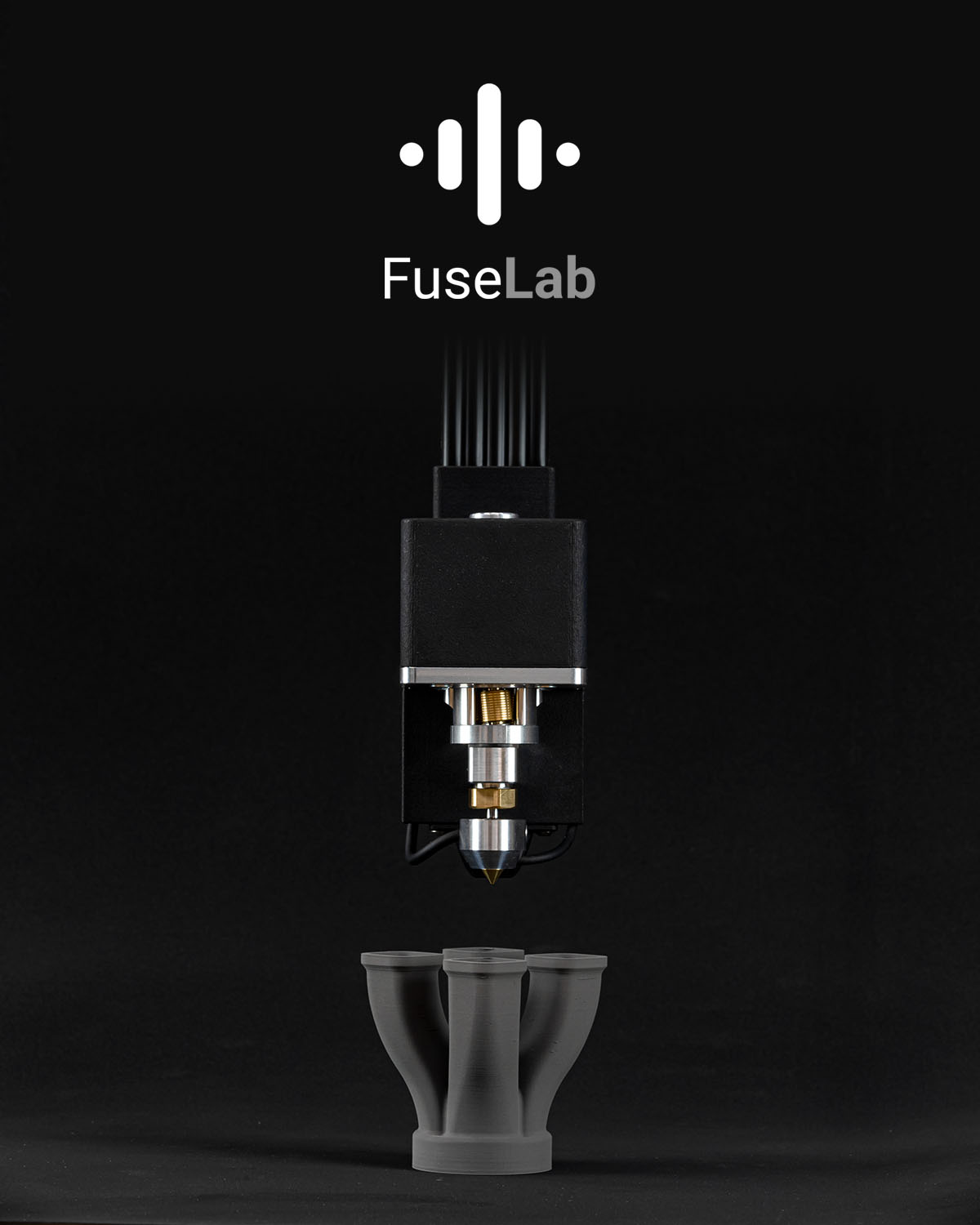Belgian 3D printing start-up FuseLab has launched its first FFF metal 3D printer, the FL300M, which features a patented rotary extruder designed to enhance metal powder-based filament printing.
Thanks to its novel rotary extruder design, the FL300M claims to minimize the risk of filament failure and under-extrusion in metal 3D printed parts by increasing the points of contact between the filament and the nozzle’s drive system.
Produced at FuseLab’s Belgium facility, the FL300M will make its debut at this month’s Formnext trade fair in Frankfurt and will become available in early 2022.
Improving FFF 3D printing
In addition to offering comparatively lower systems costs than other additive manufacturing processes, FFF delivers easy handling, a wide availability of raw material and the ability to produce parts with fully enclosed hollow features or internal support structures not possible with powder or resin-based systems.
Despite being around for decades, the FFF 3D printing process is continually being improved in order to minimize part irregularities, improve particle emission rates, and optimize inter-layer heat transfer and adhesion. In fact, established 3D printer manufacturer 3D Systems released its first industrial FFF 3D printing system only this year, forming the basis of its High Speed Fusion (HSF) platform.
FFF 3D printing is also constantly advancing through the development of new materials, such as soft and flexible TPU filaments, medical and engineering-grade filaments, biodegradable filaments, and high-performance filaments.

FuseLab’s novel extruder design
FuseLab was founded in 2018 by Jonathan Palmaers, inspired by 3D printing’s potential and seeking to address areas of improvement within the technology. The company began by developing its patented rotary extruder, and after realizing its prospective benefits for metal printing began working on the FL300M.
FuseLab’s facility is equipped with in-house engineering, prototyping, and manufacturing capabilities and operates on a closed-loop system that enables rapid development cycles and enhanced product quality control.
The firm’s first FFF 3D printer, the FL300M, distinguishes itself from others in the crowded FFF marketplace thanks to its novel patented rotary extruder, coupled with a high-performance and precision motion system.
Traditional FFF extruders tend to feed filament into the printer’s melt zone with one or two drive gears, which provide only one to two points of contact between the drive system and the filament. At higher speeds or extrusion forces this can lead to ‘slipping’ of the filament and subsequent under-extrusion.
To address this issue, FuseLab devised an extruder design based on three drive rollers which each offered 12 points of contact, totaling 36 points of engagement between the extruder’s drive mechanism and the filament.
According to FuseLab, the increased number of engagement points is particularly advantageous when printing with metal powder-based filaments, as these tend to be more fragile due to their high metal powder and low binder content. Distributing multiple contact points throughout the extruder therefore minimizes the risk of filament failure, while the extruder’s non-slip property reduces under-extrusion and therefore results in metal parts with high solidity.
With its patented extruder technology the startup is ultimately aiming to raise the quality and reliability of FFF metal printing.

The FL300M
While the patented extruder design is the showpiece of the FL300M, the machine also offers a range of other notable features. Equipped with a build volume of 300 x 300 x 280 mm, the printer is able to print multiple materials and is optimized for metal powder filaments.
The printer operates on an open filament system with filaments of 2.85 mm diameter, while a rigid motion system uncoupled from the build enclosure is designed to enhance the printing process. The machine also features an enclosed build chamber with HEPA filtration.
The FL300M will make its debut at Formnext 2021, and will be available in early 2022.
Subscribe to the 3D Printing Industry newsletter for the latest news in additive manufacturing. You can also stay connected by following us on Twitter and liking us on Facebook.
Looking for a career in additive manufacturing? Visit 3D Printing Jobs for a selection of roles in the industry.
Subscribe to our YouTube channel for the latest 3D printing video shorts, reviews and webinar replays.
Featured image shows the FuseLab FL300M 3D printer. Photo via FuseLab.


